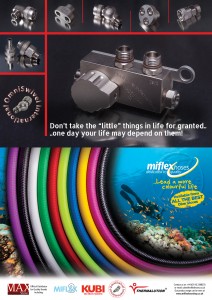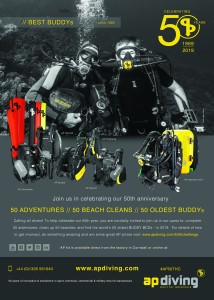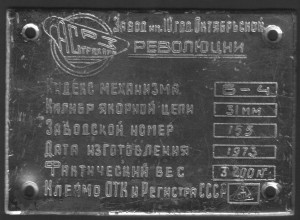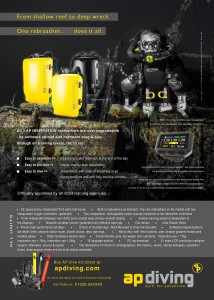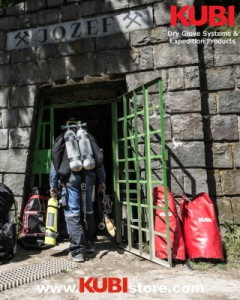DICTIONARY OF EGYPTIAN SHIPWRECKS- R
DICTIONARY OF EGYPTIAN SHIPWRECKS- R
FURTHER DETAILS CAN BE DOWNLOADED FROM
www.KUBIstore.com & www.Miflexhoseshop.co.uk
M.V. RAMB IV:
She was laid 14 January 1937, launched 7 June 1937, and completed 27 October 1937. She was 3,676 Grt, diesel powered, 116.8 meters in length, 15.2 meters in beam, with twin screws and a cruising speed of 17-18.5 knotsThe Ramb IV was originally built as a cargo ship at Monfalcone by the Re-United Yards of the Adriatic (Cantieri Riuniti dell’Adriatico, CRDA) as a banana boat for Regia Azienda Monopolio Banane (Govt), Genoa in 1937 for transporting refrigerated bananas from Samaliland and Eritrea in Italian East Africa.. The Ramb IV was converted into a hospital ship for service during WWII by the Italian Royal Navy’s Red Sea Flotilla at the Eritrean port of Massawa, and and she was re-named Aquileia. The ship was to be used for transporting Italian wounded from the Port of Massawa back to Italy. However, this proved to be not possible due to British control of the Suez Canal. When the Port of Massawa fell on 10 April 1941, the British captured the ship off of Aden and pressed it into service where she operated in the Red Sea and later in Libya.
On 10 May 1942, while enroute Tobruk to Alexandria, the Ramb IV was attacked and bombed by German JU-88 aircraft and damaged. Fire resulting from the bombing broke out onboard the ship and she had to be abandoned. One source records that the HMS Kipling was dispatched to assist the ship and placed a fire fighting party on board the ship to assist ship’s crew combat the fire. Never-the-less, the ship was abandoned and was later sunk by British Royal Navy ships at position 31.17N/29.23E in approximately 400 meters of water off the coast of what is now Sidi Krier. The ship was carrying 360 staff and wounded patients when attacked. 155 wounded men and 10 crew were lost.
S.S.REAPWELL
The Reapwell was a steam cargo ship of 3,417 Grt that was originally built as the Shirley at the W. Gray & Co., Ltd., West Hartpool Yard No. 604 for Mitre Sg Co. Ltd. (Houlder, Middleton), London. Launched 18 December 1899 and completed in Febrary 1900, the ship was 101 meters in length, 14.4 meters in beam, and a single screw. Re-named Reapwell in 1913.On 27 December 1916 while enroute from Cardiff to Malta via Port Said carrying general cargo and coal, the ship was torpedoed by German submarine U-39 (Walter Forstmann) at position 33.37N/27.35E. The U-39’s KTB states the sinking postion as being 33.07N/28.20E. Master taken prisoner
S.S REGAL
The British cargo ship,2412 tons, 300ft long was built in 1883 by Cambell, Mackintosh & Bowstead for the Conaway Co. Her final voyage was from Antwerp with a general cargo. When she neared her final destination, Alexandria, she foundered just at the bar on the16th Feb 1894
RONALDSHAY
The RONALDSHAY was a dredger owned by the Bengali Government working off Safaga Island in October(22nd) 1942 and was torpedoed by German aircraft with the loss of her captain and 52 crew. She was built by Simons & Co in 1922, had a displacement of 1023 tons. She was 258 ft long, and 45 ft in the beam. Fitted with triple expansion engines There is a un confirmed report of the vessel being salvaged in the mid eighties and only debris remains, but she is the subject of further research.
The war diaries report she sank “off the deep water quay”
S.S. ROSALIE MOLLER
THE HISTORY
The 3963 ton, 115mtrs long ship began life in the ship yards of BARCLAY and CURLE, at Glasgow as the FRANCIS in 1910.In 1931 she was sold to the Reederei Moller Line of Skandinavia. and reregistered in Shanghai under the British flag. For the next few years she operated along the east coast of China between Shanghai and Tsingtao, until in 1938 with war on the horizon she was recalled to Liverpool and under the new command of Captain James Balsom she undertook collier duties, delivering 4500 ton of coal to Royal Navy bases. THE FINAL OYAGE
When war broke out she made several successful trips running the gauntlet to Gibraltar, then in 1941 after a much needed overhaul she left Britain bound for Alexandria, via the Cape of Good Hope with yet another cargo of coal. With the Gibraltar straits closed due to the Axis forces there was no access via the Mediterranean so the longer route via the cape had to be undertaken. Stopping at Durban and Aiden on route, she finally entered the Straits of Gobul, in the Egyptian Red Sea, and ordered to anchorage H to await further instructions
THE SINKING
In the early hours of Oct 8 1941, two days after the sinking of the Thistlegorm, while at anchor in the area between Gobal and Quisum Islands, designated anchorage H, having literally followed in the wake of the Thistlegorm, she was attacked by a staffel of HEINKEL 111 bombers. Two bombs exploded in number 4 hold causing heavy damage in the starboard quarter. She rapidly filled with water and began to settle. The weight of her cargo plus the water kept her in a level attitude. She sank quickly with the loss of only two lives, the survivors taking to the lifeboats.
In one official report she is listed as being raised and salvaged at the end of the war, but it was rumours of a “sistership” of the Thistlegorm and further reports of a ST Francis which lead us to look for the ship. An old map marked with “Anchorage H” gave us a starting point; that clue had come from the HMSO publication of British Vessels lost at sea 1939-45. After months of searching we found her intact upright and pristine.
She now lies on a sandy, muddy bottom with her Titanic like bow down into the sand, and this is truly a magnificent sight. The port anchor is up and the starboard down. Her forepeak complete with winch gears and deckhouses can be easily explored. There is the traditional lamp and paint room. But access to the crews quarters still eludes us. The entrance is well concreted with a skin of coral . There is no foc’sle due to her design. Both masts stand proud and straight the substantial cross bracing makes a perfect shelter for many hundreds of glassfish, and are flanked with winches. The foremast boasts a magnificent crows nest in 22mtrs. Fish shoal around the cross bearers and the mast bases make superb photo studios, Moving aft the bridge is alive with glassfish. It is easy to swim from room to room or down the inboard companionways once the local inhabitants permit entry. as all the wooden floors and bulk heads have long since rotted away. Officers and engineer’s rooms, dispensary and doctors room are all on the deck level, with the captain’s quarters and dinning room are above, the wooden wheelhouse has gone. Slabs of concrete, serving as armoured plating hang precariously above. All the timber have rotted away making access very easy. Brass fittings, lamps and porthole drip trays lie buried in the silt, which has accumulated over the years due to the lack of current.
The single funnel has sadly toppled over, dragged there by a grapple from some skipper incapable of locating the wreck correctly. Most handrails are intact and the lifeboat davits are swung out shrouded in a ghostly cloud of silversides. A poyniant vision.
The in board companionways separate the saloon from the guests quarters and likewise the engineers accommodation. Again all the wooden divisions have long gone for swim-throughs and again glassfish abound. A deck galley sits proud complete with 16 portholes in its ventilators and there are store rooms with several axels within. The engine room at 46 m is totally intact with gauges still in place and is easily accessible. The low pressure pot had us confused for a while for lying on top was a porthole. Metal from the bomb blast has damaged the skylight above the engine room knocking the porthole out to where it lies today. The engine room is a sight to behold, intact handrails, workshops, gauges, telegraph all as they were the day she sank, so much to explore but time and deco are never on our side.
Many of the workshops still retain an air of working life, pots and pans await the next meal in galleys, bulk head lamps waiting to be serviced in the workshops. There is always a moral dilemma leave be for others to see and trust or secure deep within the wreck where no one can steal or see.
The holds still contain her cargo of coal. The damage to her starboard quarter is evident but the stern is intact and the steering assembly plain to see. The steering boss and metal hoop are all that remain of the huge wooden wheel, long since devoured by marine worms Over the stern section is a metal framework once covered in canvas it acted as a foul weather canopy. There is a second galley below the aft lifeboat deck; added when she was refitted in 1939, and aft of the 5th hold is a ‘tween deck with store rooms which included a potato room and a post room! Most of the handrails are still intact here and hard corals have encrusted many surfaces.
If the bow section is the land of the grouper then the stern belongs to over sized lionfish and big eyes. Large shoals of fish including tuna, jacks and snapper can be found around the wreck. Because of the limited bottom time it takes several dives to fully appreciate this wreck and great care must be taken due to the depth and sometimes reduced visibility. Good planning and surface support is required for this challenging dive.
The extra skills and experience needed to dive this wreck, plus a crew with equal abilities should help keep this beautiful lady safe from the desecration clod hopping, thoughtless divers and guides have bestowed on her “sister ship” Long may she rest in one piece.
SEPTEMEBER 2019 BOTH MAST ARE NOW TOTALLY PULLED OVER- THE CROWS NEST NOW LIE S ON THE DECK, AND THE AFT MAST WHICH UNTIL RECENTLY OFFERED A 20MRS DEEP STOP, NOW LIES OUT FROM THE PORT SIDE DECK.MORE MORONIC TIES OFFS BY IDIOTIC DIVE MASTERS
S.S. ROSALIND
A Cape Romain Class Freighter, built in 1918 as War Mercury by the Bethlehem Shipbuilding Corp., Sparrows Point, MD; Launched 4 May 1918; Completed as Cape Romain; Acquired by the Navy 25 June 1918 and commissioned USS Cape Romain (ID 2970) the same day; Decommissioned 3 March 1919 at New York and transferred to the United States Shipping Board; Sold in 1920 to the Atlantic, Gulf and Pacific Steamship Corp. of Baltimore, MD; Repossessed by the USSB in 1922; Sold in 1929 to the A. H. Bull Steamship Co. of New York and renamed Emilia; Sold in 1951 to the Basile Shipping Co. of Honduras and renamed Isabel; Sold in 1953 ro Cia Comercial y Financiera Sudamericana of Panama and renamed Rosalind; Sold in 1956 to Overseas Enterprise, Inc. of Panama.
Specifications: Displacement 10,505 t.; Length 391′ 9″; Beam 52′; Draft 23′ 11″; Speed 11 kts.; Complement 52; Armament one 6″ and one 3″ mount; Propulsion: Scotch boilers, one 2,800ihp reciprocating steam engine, single shaft.
Foundered in bad weather 2 March 1956 in the Mediterranean Sea off the northern coast of Egypt at position 33° 21′ N./ 27° 50′ E.
RUSSAIN WRECK, (AKA THE MOMA)
This is a classic example of “ Bantinism”, Of course I was wrong! A spy ship ? rubbish it’s a trawler it’s a cargo ship, so said all those “experts”. One even demanded I be exposed as a fraud- so an editor came out- and saw the true first hand
A diver hovers over the stern of the Moma class Surveillance vessel at Zabagad Island .The damage from the explosion can clearly be seen in the starboard hull.On the aft deck are the winches for towing the sonar arrays.
THE DISCOVERY
During the early BSAC expeditions to Southern Egypt, one of our main targets was to locate the wreck of the MAIDAN, as well as exploring the undived sites of the south. Cruising around Zabagad we found two lifeboats lying on the shore. We thought they might be from the Maidan and spent the next day diving the outer reefs of St John’s or Zabagad island. Encountering a school of hammerheads we noticed a large freighter in deep water (70mtrs) below us. Beyond our remit, we could only speculate that this might be the Maidan, indeed we now know she is likely to be the TAIWAN.
We decided to check out 2 lifeboats-English pump action type- lying on the shore and in doing so stumbled across a cargo ship-her radio and comms mast just below the surface. At first we thought the lifeboats were from this ship, but again we were to be proved wrong.
The initial dive was a hurried one –the last day of that years expedition. The initial appearance of the ship was that she was simply a small cargo vessel which had run aground- quite recently- not much coral and indeed a painted emblem on her funnel.
Electronic equipment lay all around the ship- much more than the usual array of masts coils and cables. Russian lettering on notice plates were everywhere, her compass originating from Denmark. An intact helm and bridge provided a fascinating dive- if anyone had been here before they had left her undisturbed.
As we sailed away we were all excited at the find and speculated over the two wrecks with lots of unanswered questions. My suggestion that this little cargo ship was indeed a Russian
spy ship was met with ridicule –I was told I watched too many Bond films. My instincts wouldn’t let go.
I returned to the wreck whenever our schedule allowed. The more I diver her, the more convinced I was about my theory. On 8th June of 2003, the day after John Womack (OtterWater Sports)and myself found the Maidan ,I took an electronics expert deep into the Russian wreck-showing him the racks of batteries-and the schematics at the end of each row. Although I couldn’t understand his technical jargon through his mouthpiece I got the gist of what he was getting at.All these batteries could only mean one thing. The ship needed a clean power source for her purpose. Her usual generators would give of radiated and transmitted noise-batteries wouldn’t. He traced the cables-some ended where a piece of equipment had been removed through an access panel in the hull. Other cables ran forward and we were not to discover their destination for another year. David you see is “rotund” and couldn’t quite squeeze through the ducting! .We eventually had to drag him away from “all that electronic stuff” I became an expert in electronic jargon after that dive ; “switch mode”, “multi phase”, “dirty” and “clean” power. Another convert for my theory.
THE UNDENIABLE CLUES.
Throughout the ship we found evidence of electronic surveillance equipment. One room, located below and behind the bridge was a communications centre. Desks packed with electronic gauges, dials, knobs and switches-desks for 6 -10 personnel. The switches were all labelled in Russian-some examples on the left with their translations.
The Comms mast had huge multcore cables running through it-far more than a coastal vessel or a trawler would need.Several directional findingantenna were also located close by.
The word TYRE has 3 meanings in Russia- a car tyre, a surgical splint and an electric buss-or distribution board sometimes known as a buzz bar.
The battery room contained over 200 batteries in 4 sections each with a schematic at each end. The cables traced back into the communications room.
The HT lead running ashore was armoured and multi cored-leading to a solid base- on the island-no doubt for a fixed array.
|
Astrakhan SSZ im. 10-iy God. Oktyabrskoy Revolyutsii, Astrakhan
The ‘Moma’ class electronic surveillance ship (Project 861M)
The Moma (Project 861) was and is a costal survey ship. They are also used as buoy tenders. The converted Moma (Project 861M) is an Electronic Intelligence (ELINT) gathering ship converted from Moma class survey ship/buoy tenders. These ships carry SSV (Communications Vessel) numbers on the bow
Specification
Russian Designation: SSV (Communications Ship)
Builder: Stocznia Polnocna, Gdansk (Poland)
Role: ELINT
Year adopted: 1967
Number in Class: 28 ships total (production from 1968 – 1974)
Operational Status: Russia: Still in active service
Displacement: 1,580 tons full load
Length: 73.3 meters. Draught: 3.8 meters.Beam:10.8 meters
Crew: 41 – 120 Officers and Sailors (depending on the mission)
Engine: 2 x Zgoda/sulzer 6TD48 diesel engines delivering 3,600 hp
Max Speed: 17 Knots Range: 8,700 Nautical miles at 11 knots
Sensor Suite: 2 x Don-2 navigational radars
Sonar: Bronza arrays
Electronic Warfare: Intercept and DF arrays
THE WRECK TODAY
The wreck lies upright in 24 mtrs in the western bay of Zabagad Island. Her bow and small hold have broken off and lie over to port, full of the obligatory glassfish. There is no evidence of any cargo. She is otherwise intact, with a stern superstructure and engine room. Access to her bridge, complete with instruments, engine room and galley along with companionway swim-throughs is easy and exciting.
Her instrument panel and helm are located in the bridge behind which is a navigation room and stairs down into the accommodation and galley areas. Evidence of beds, tool boxes and every day items are scattered throughout the interior. Large diameter corrugated hoses lie in her stern and her single forward hold. All her deck fittings are visible, and intact including the empty lifeboat davits, stern winch, cable drums for the towed arrays and “toadstool” ventilator tops. Her central comms mast almost breaks the surface. Compass posts sit at each side of the flying bridge. Access to the engine room and her accommodation area can be gained from doors situated on the rear deck. The rear section of the ship can also be explored from the large holes in her hull. It is possible with care to enter the engine room this way and then exit via the rear doorways or her skylights. In front of the wheelhouse is a control room for what appears to be piping and valves for liquid fuel. The lack of depth (max 24 mtrs) means the wreck is usually bathed in strong sunlight, the clearer water being the upper levels as the sandy bed often becomes cloudy if a swell is present. The stern sitting bolt upright is an impressive sight and is very photogenic.
The bow section lies over to starboard, the bow itself hard into the reef, and the central raised walkway having broken of from the main section by the deckhouse. Near the winch is an upright structure possibly a crane of some kind and access to the hold is open or though one of two service hatches on the deck or for the less adventurous through a he gash in her starboard side. From the walkway a forward comms mast runs out almost horizontal and is home to many small reef fishes and soft corals.
The surrounding area is littered with DF masts and several antenna, and radio sets lie off towards the shore amongst the corals- all distinctly Russian.
THE ENIGMA
It is clear form all of the evidence that this vessel was used as an “intelligence gatherer”, but what was she doing tucked away in a bay in a quite corner of Egypt near the Sudanese border? Some time between 1974 and 1985 –the cold war period
Had she simply put in for repairs and the ensueing explosion sunk her? If so why had all the watertight doors been cut at the hinges, preventing them from being refitted
Why the HT a cables and fuel pipes running ashore? The Russians were operating out of the Dallak Islands (Eritria) during the cold war. She may be one such vessel. They also had strong connections with the Egyptians and there are several Russian built Egyptian shipwrecks from the Arab conflicts. However there is nothing on the ship to suggest she was an Egyptian vessel or indeed have an Egyptian crew. Was she watching shipping for both Russia and Egypt?Perhaps the clouded past of the cold war will keep her full story a secret.
One final enigma is this sign-the only one found in English
2018 POSTSCRIPT. OFF COURSE WE KNOW NOW THAT SHE WAS INDEED A SURVELIENCE GATHERER, A MOMA ELINT PROJECT 165 SPY SHIP
Some Bantinites need to eat their words, swallow humble pie or simply be quite……..aaaahhhhh the Bantinites silenced again
don’t you agree Ashley??????
